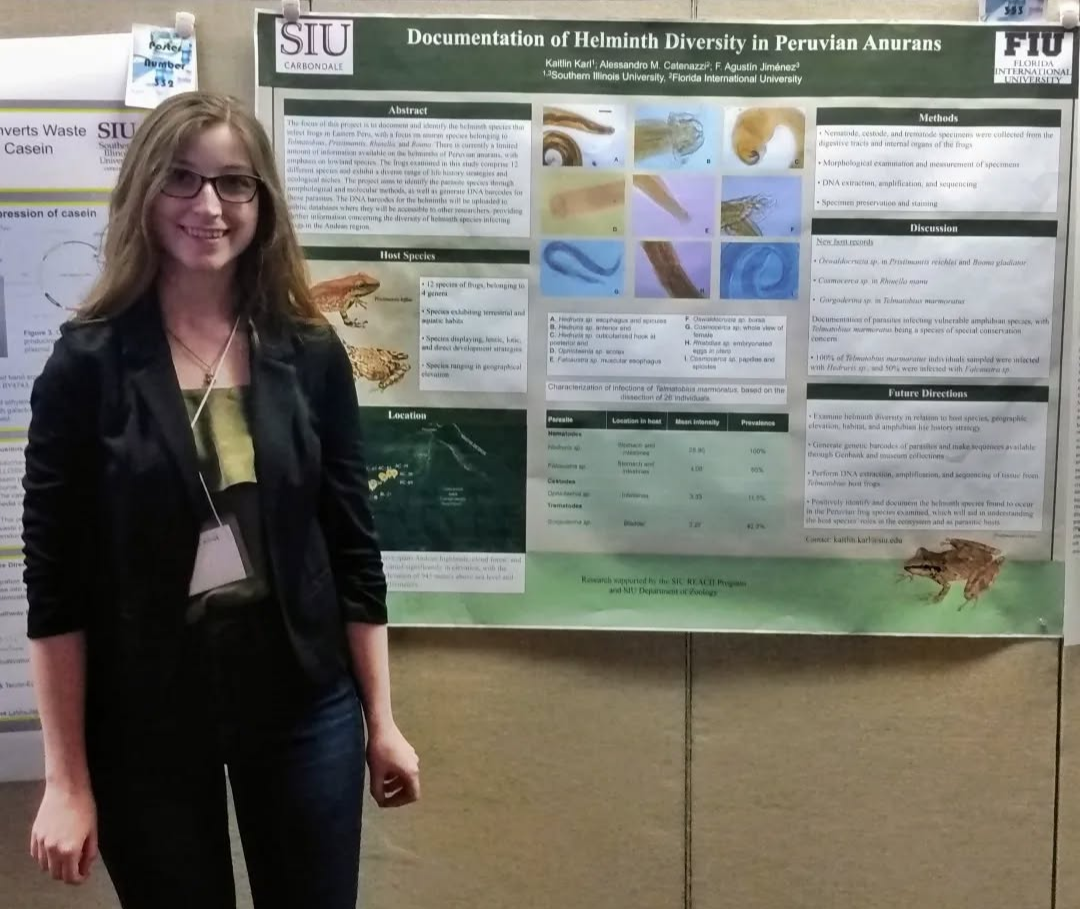Characterization of Helminth Diversity in Peruvian Anurans
Date:
There is currently a limited amount of information available on the helminths of Peruvian anurans, with emphasis on lowland species. The focus of this project is to document and identify the helminth species that infect frogs in the Eastern slopes of the Andes, with a focus on anuran species belonging to Telmatobius, Pristimantis, Rhinella, and Boana. Nematode, cestode, and trematode specimens were collected from the digestive tracts and internal organs of 66 individual frogs comprising 12 different species found in Manu National Park in Peru. These amphibian species exhibit a diverse range of life history strategies and ecological niches, and information concerning their helminth diversity will be helpful in further understanding the anuran species’ roles in the ecosystem and as parasitic hosts. The helminth species are currently being identified using both morphological and molecular methods. These parasite specimens are undergoing the process of DNA extraction and amplification, followed by characterization through the sequencing of genetic fragments, including Cox1, Cytochrome b, and Internal Transcribed Spacer (ITS). The species identity and abundance will be used to determine if parasite load varies with host species, geographic elevation, habitat, and amphibian life history strategy. The results of this research project will help broaden our scientific understanding of this subject by providing further information on the prevalence and diversity of helminth species from the Andean region and describing the parasites’ presence in multiple anuran host species that have not previously been recorded.

